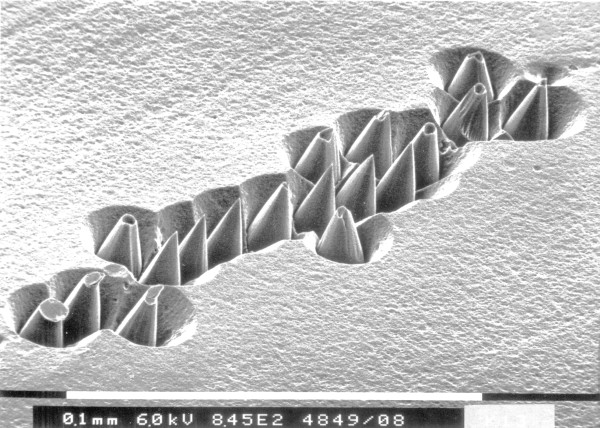And now the end is nearWell, that’s my second most hated song, suited either to a dictator facing trial at the International Criminal Court or a drunkard expiring in a ditch. Even the melody was stolen from a much superior (in my opinion) French song “Comme d'habitude”[1,2].
And so I face the final curtain
Not that I could justifiably sing it, anyway:
Regrets I’ve had a fewOn the contrary, my career in science is littered with them. One of the most poignant is the memory of the many students we have had whose work has not reached publication to the extent that it should have.
But then again too few to mention
Our most outstanding source of students has been the University of Mansoura in Egypt. Between us, there was fixed up something called “the Channel System”, whereby PhD students from that university could come and do the bulk of their PhD using our much more extensive resources, particularly our electron microscopes. Some of these returned to us later for spells of post-doctoral work.
It wasn’t just our equipment, though. Back around 1976, we developed an etching technique to reveal the semicrystalline structure of the common “bucket” plastics (polyethylene and later polypropylene) under the electron microscope. But right from the beginning, we worked with great secrecy to keep our technique secret as long as possible from “the Emperors”.
One the problems faced by a small group like ours is that we can develop a technique or make a discovery, and as soon as it gets out, the leader of a much larger group with many students, and more technical and secretarial support, can move in and make a killing.
The Egyptian students started to arrive in the late 1980s. The first of these was named Magdy, and one of the things he worked on was a refinement of our etching technique. With great u=success: the formulation we still use today is called, by us, “Magdy-Mix”. But it was ten years before it reached publication. He also worked on etching of other polymers with totally different reagents, which allowed later students from Mansoura to produce work for publication. His own contribution, however, did not appear in print until 2002. (References 3 and 4 show what kind of pictures we obtain from these techniques. You’d never think that plastics were so intricate!)
He returned to us for a short postdoctoral period at the time of the Second Gulf War (the first of those being the murderous Iraq-Iran war of 1980–88). Two papers in cooperation with a group which did not adopt the “imperial” attitude came out of this, but again technique development lay buried – until now, that is.
One of the main interests of his home group back in Egypt is the study of polymer fibres, and with this visit we acquired several varieties of aramid materials, both Kevlar (DuPont) and Twaron (AKZO). When looking at fibres, we observe them both along and perpendicular to the fibre axis. For observing down the axis, we embed them in a block of, if possible, co-etchable material and produce a clean cut surface to etch, if necessary with a diamond knife. This is one of the pictures he obtained looking in this way at Kevlar:

With the Gulf War in process, it is hardly surprising that we immediately thought of missiles, ready to launch at the enemy.
It is time, I think, that these pictures saw the light of day.
References
[1] http://en.wikipedia.org/wiki/My_Way_%28song%29
[2] http://www.lexilogos.com/claude_francois/my_way.htm
[3] Refinement of Etching Techniques to Reveal Lamellar Profiles in Polyethylene Banded Spherulites
Shahin,M.M., Olley,R.H., Blissett,M.J.
Journal of Polymer Science – Physics 1999, vol.37, pp. 2279-2286
[4] Novel Etching Phenomena in Poly(3-hydroxy butyrate) and Poly(oxymethylene) Spherulites
Shahin,M.M., Olley,R.H.,
Journal of Polymer Science – Physics 2002, vol. 40, pp 124-133.





Comments